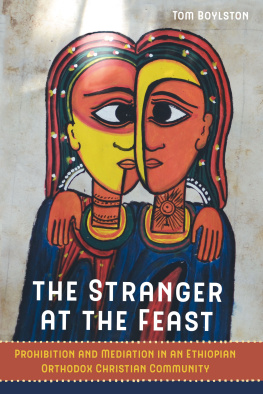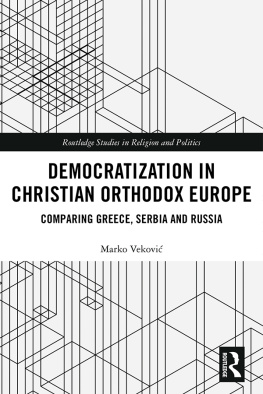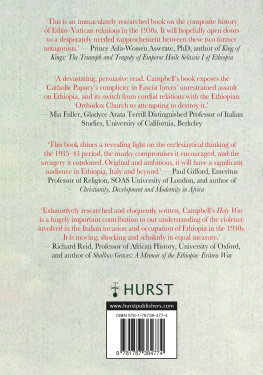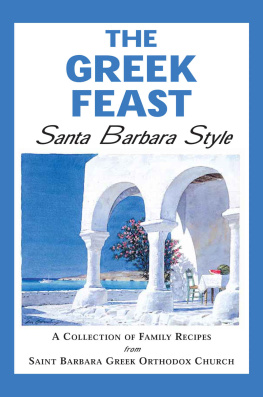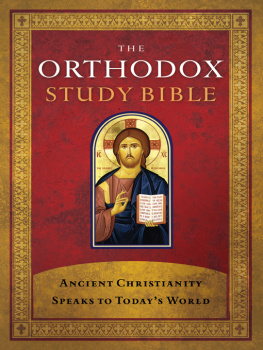CONTENTS
Luminos is the Open Access monograph publishing program from UC Press. Luminos provides a framework for preserving and reinvigorating monograph publishing for the future and increases the reach and visibility of important scholarly work. Titles published in the UC Press Luminos model are published with the same high standards for selection, peer review, production, and marketing as those in our traditional program. www.luminosoa.org
This research was made possible by an ESRC studentship PTA-031200600143 and by a British Academy Postdoctoral Fellowship.
The Stranger at the Feast
THE ANTHROPOLOGY OF CHRISTIANITY
Edited by Joel Robbins
Christian Moderns: Freedom and Fetish in the Mission Encounter, by Webb Keane
A Problem of Presence: Beyond Scripture in an African Church, by Matthew Engelke
Reason to Believe: Cultural Agency in Latin American Evangelicalism, by David Smilde
Chanting Down the New Jerusalem: Calypso, Christianity, and Capitalism in the Caribbean, by Francio Guadeloupe
In Gods Image: The Metaculture of Fijian Christianity, by Matt Tomlinson
Converting Words: Maya in the Age of the Cross, by William F. Hanks
City of God: Christian Citizenship in Postwar Guatemala, by Kevin ONeill
Death in a Church of Life: Moral Passion during Botswanas Time of AIDS, by Frederick Klaits
Eastern Christians in Anthropological Perspective, edited by Chris Hann and Hermann Goltz
Studying Global Pentecostalism: Theories and Methods , by Allan Anderson, Michael Bergunder, Andre Droogers, and Cornelis van der Laan
Holy Hustlers, Schism, and Prophecy: Apostolic Reformation in Botswana, by Richard Werbner
Moral Ambition: Mobilization and Social Outreach in Evangelical Megachurches, by Omri Elisha
Spirits of Protestantism: Medicine, Healing, and Liberal Christianity, by Pamela E. Klassen
The Saint in the Banyan Tree: Christianity and Caste Society in India, by David Mosse
Gods Agents: Biblical Publicity in Contemporary England , by Matthew Engelke
Critical Christianity: Translation and Denominational Conflict in Papua New Guinea, by Courtney Handman
Sensational Movies: Video, Vision, and Christianity in Ghana, by Birgit Meyer
Christianity, Islam, and Orisa Religion: Three Traditions in Comparison and Interaction, by J. D. Y. Peel
Praying and Preying: Christianity in Indigenous Amazonia, by Aparecida Vilaa
To Be Cared For: The Power of Conversion and Foreignness of Belonging in an Indian Slum, by Nathaniel Roberts
A Diagram for Fire: Miracles and Variation in an American Charismatic Movement, by Jon Bialecki
Moving by the Spirit: Pentecostal Social Life on the Zambian Copperbelt, by Naomi Haynes
The Stranger at the Feast: Prohibition and Mediation in an Ethiopian Orthodox Christian Community, by Tom Boylston
The Stranger at the Feast
Prohibition and Mediation in an Ethiopian Orthodox Christian Community

Tom Boylston

UNIVERSITY OF CALIFORNIA PRESS
University of California Press, one of the most distinguished university presses in the United States, enriches lives around the world by advancing scholarship in the humanities, social sciences, and natural sciences. Its activities are supported by the UC Press Foundation and by philanthropic contributions from individuals and institutions. For more information, visit www.ucpress.edu .
University of California Press
Oakland, California
2018 by Tom Boylston
Suggested citation: Boylston, T. The Stranger at the Feast: Prohibition and Mediation in an Ethiopian Orthodox Christian Community . Oakland: University of California Press, 2018. doi: https://doi.org/10.1525/luminos.44
This work is licensed under a Creative Commons CC BY-NC-ND license. To view a copy of the license, visit http://creativecommons.org/licenses .
was first published in different form in Africa Vol. 87, No. 2, 11.04.2017, p. 387406, under the title From sickness to history: Evil spirits, memory, and responsibility in an Ethiopian market village. (2017)
Material from was first published in Material Religion 11(3): 281302, under the title: And Unto Dust Thou Shalt Return: Death and the Semiotics of Remembrance in an Ethiopian Orthodox Christian Village. (2015).
was first published under the title: Sharing Space: On the Publicity of Prayer, between an Ethiopian Village and the Rest of the World in Praying with the Senses: Contemporary Orthodox Christian Spirituality in Practice. Ed. Sonja Luehrmann. Bloomington: Indiana University Press (2018).
Library of Congress Cataloging-in-Publication Data
Names: Boylston, Tom, 1980- author.
Title: The stranger at the feast: prohibition and mediation in an Ethiopian Orthodox Christian community / Tom Boylston.
Description: Oakland, California: University of California Press, [2018] | Includes bibliographical references and index. |
Identifiers: LCCN 2017038245 (print) | LCCN 2017041872 (ebook) | ISBN 9780520968974 (ebook) | ISBN 9780520296497 (pbk.: alk. Paper)
Subjects: LCSH: Christianity EthiopiaCase studies. | TabooEthiopia Case studies. | Mediation Religious aspectsChristianityCase studies. | Ethiopia Church history.
Classification: LCC BR1370 (ebook) | LCC BR1370 .B69 2018 (print) DDC 281/.75 dc23
LC record available at https://lccn.loc.gov/2017038245
CONTENTS

MAP 1. Zege Peninsula.
NOTE ON AMHARIC PRONUNCIATION AND TRANSLITERATION
Amharic transliteration is based on the system used by A. Pankhurst (1992). This system minimizes diacritics and is more approachable to nonspecialists than those used for technical linguistic work.
The vowels are represented as follows:
1st order: e (pronounced as in d e mocracy)
2nd order: u (as in l u nar
3rd order: (as in F i j i )
4th order: a (as in f a ther)
5th order: (as in fianc)
6th order: i (as in med i cine)
7th order: o (as in v o te)
Explosive consonants are represented by q, t, s, ch, and p. Gemination is indicated by doubling of the consonant where appropriate.
ACKNOWLEDGMENTS
I have run up far too many intellectual debts to count since this research began. First of all I am grateful to everyone in Zege who has looked after me and put up with my questions: to Thomas and Haregwa, Abebe and Zebirhan, Abbo, Antihun and Askay, Eyayehu and Yekaba, Kassahun and Wibay, to Menilek, Babbi, and Masti, to Aderaw and Getaneh, to Temesgen, Tillik Sew, Selam, Beza, Endalew, Yitayal, Mulet, Abderajah, to Taddesse and to gash Tesfaye. I am grateful to Yilekal for his help in starting this work, and to Amare for introducing me. I thank everybody in the Ethiopian Orthodox Church who has assisted me with such patience: Abba Som and Abba Melake Gennet; Abba Haylemaryam, Mergta Worq, Mislen Fantahun, Memhir Abbi, and in Addis Ababa to Memhir Daniel, who was always willing to explain things. Tefera Ewnetu has shared his expertise and time with unmatched generosity. Igzabhr yistilli lehullachihu. I owe special debts to the works of Tihut Yirgu Asfaw, Binayew Tamrat, and Abdussamad Ahmad, who have set the standard for studying Zege.
In Bahir Dar I am also tremendously grateful for the friendship of Anna, Kyle, Saul and Juliet, John Dulin, Anita, Caitlin, Stef, and all the Peace Corps folks. In Addis Ababa Makeda Ketcham, Yodit Hermann-Mesfin, Stphane Ancel, Alula Pankhurst, and many others have provided generous guidance, and Brook Beyene introduced me to Amharic language and literature with flair and wit. Izabela Orlowska was a gracious host and an academic inspiration. Ralph Lee has shared freely his immense knowledge of the Ethiopian Orthodox Tewahido Church. Sara Marzagora has been an inspirational scholar.

